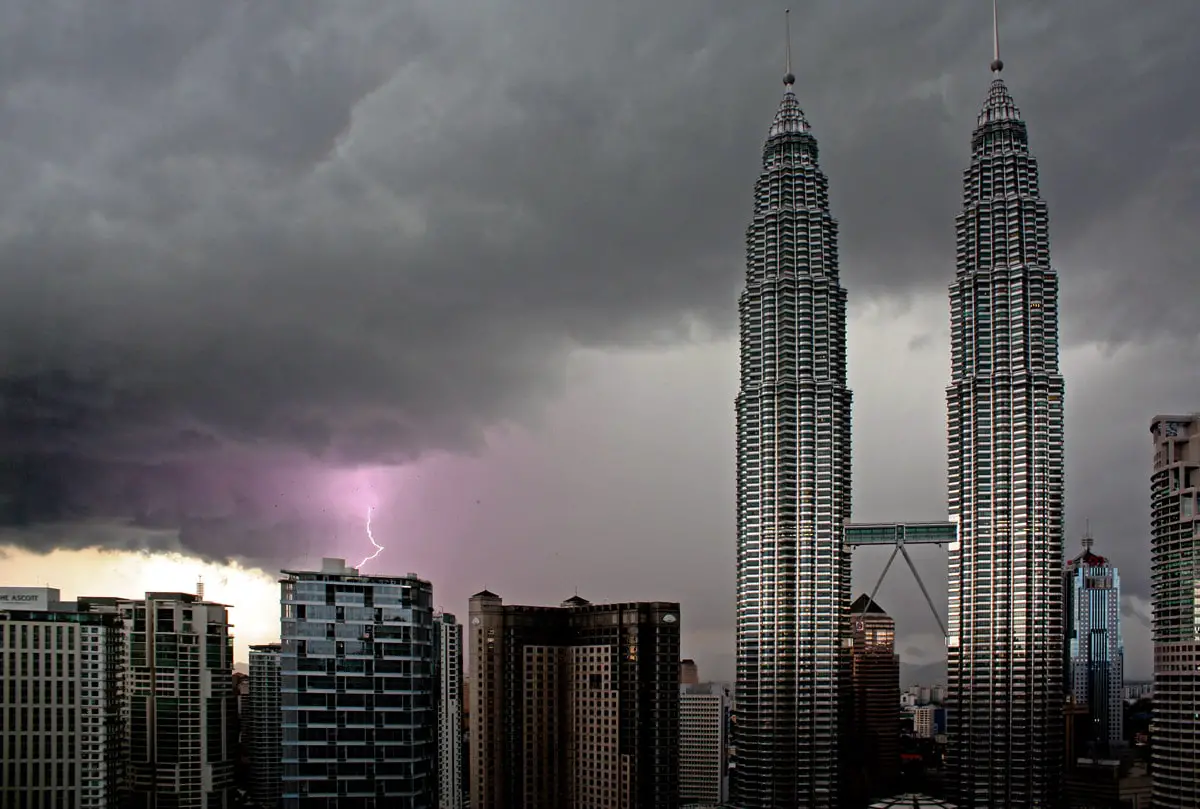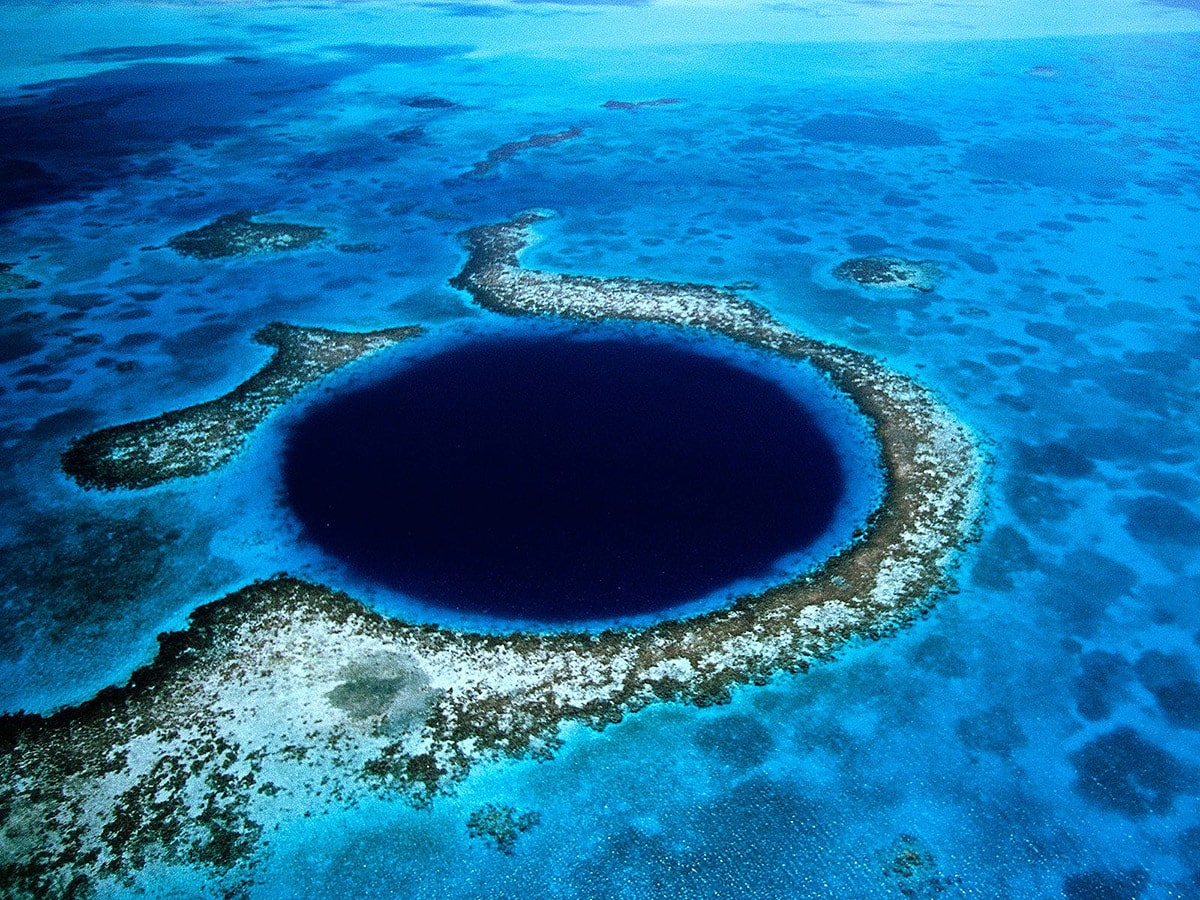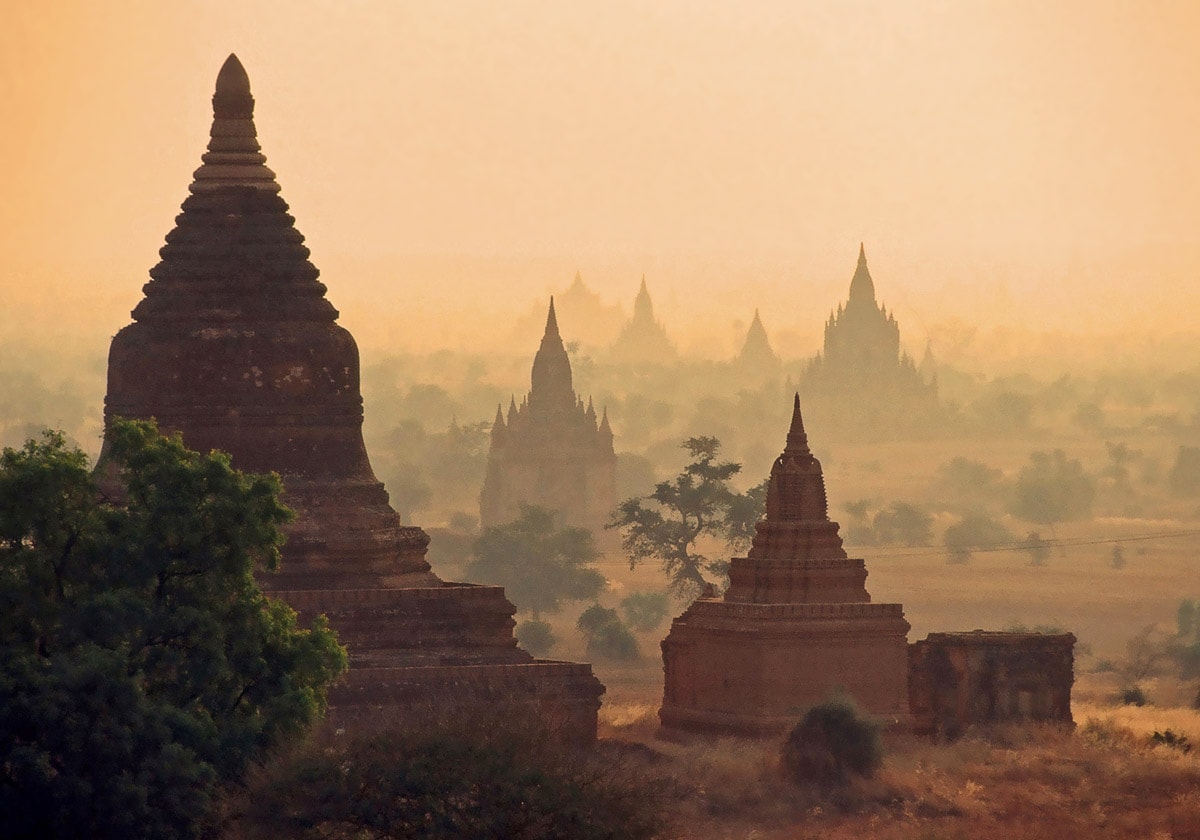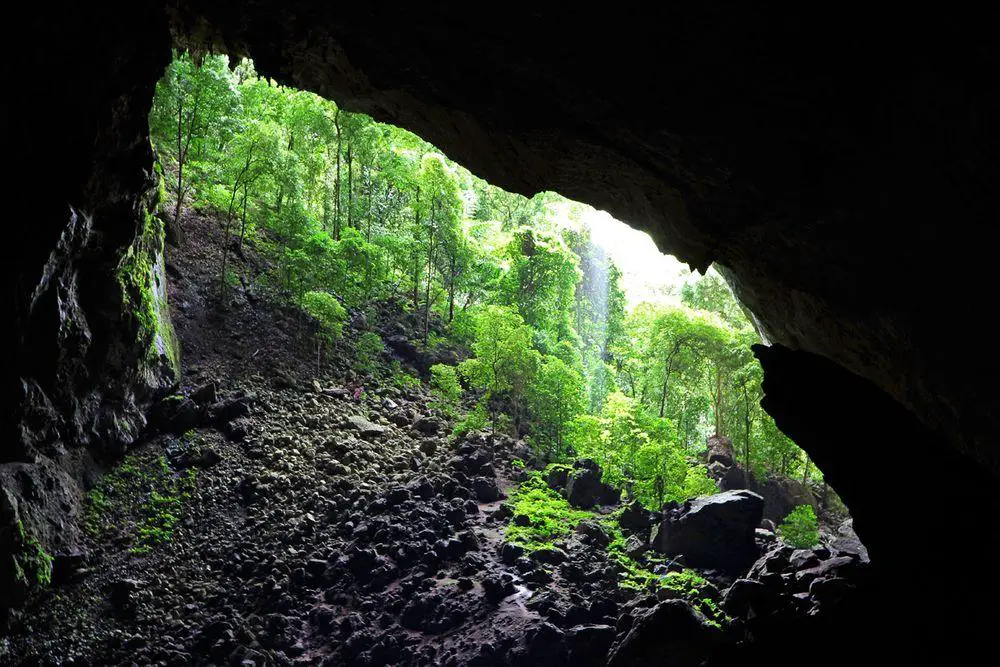 In short
In short
There exists Garden of Eden on Sarawak! But in order to reach it one should walk through one of the greatest cave passages in the world! This wonder is found in the spectacular Gunung Mulu mountains.
 48.3%
48.3%
GPS coordinates
Location, address
Depth
Volume
Map of the site
If you see this after your page is loaded completely, leafletJS files are missing.
 In detail
In detail
Karst in Gunung Mulu mountains
Northwest part of Gunung Mulu mountains consists of pure limestone which formed some 20 – 30 million years ago, in the late Eocene – early Miocene period. This limestone, named Melinau Formation (after the nearby river) overlays the older Mulu Formation which consists of sandstone and shale.
Borneo is located in a tropical rainforest climatic zone and as a result, limestone is intensely eroded by frequent rainfalls and powerful streams. These karst processes in Gunung Mulu have created spectacular landmarks, such as some of the world’s largest caves (Sarawak Chamber – world’s largest cave chamber), sinkholes, limestone pinnacles, and others.
Description of Garden of Eden
Garden of Eden is a circular valley, approximately 1 – 1.2 km wide. From three (western, northern, and eastern) sides it is surrounded by steep, 150 – 300 m tall limestone walls but from the fourth – south-eastern – side it is flanked by a rather steep slope of sandstone and shale formation. This valley is covered with lush tropical forest.
From the south-east in the valley flows a stream, which enters the Garden of Eden with a picturesque waterfall. It crosses the Garden of Eden and leaves it to the west through a giant cave passage – Deer Cave. Further down this stream falls into Melinau Paku stream which then falls into Melinau River.
Since 1984 Deer Cave is opened to tourists. More adventurous tourists can take a walk through Deer Cave to Garden of Eden. These walks are allowed only in small groups, under the guidance of an experienced guide.
Deer Cave and Green Cave
The easiest way to access the Garden of Eden is through Deer Cave. This approximately 1 km long passage (total length of all passages of Deer Cave is approximately 4 km) is one of the most spectacular cave passages in the world. In its widest parts, this cave passage is 169 m wide and 125 m high and until recently it was thought that this is the widest cave passage in the world (since 2009 it is surpassed by Son Doong cave in Vietnam). Sunlight reaches almost whole 1 km long passage.
In the northern wall of Garden of Eden opens another cave – Green Cave. It also crosses Gunung Mulu massif and its passages are just a bit smaller than passages of Deer Cave.
Sinkhole or karst valley?
Garden of Eden has formed in the area where on the surface meet Melinau limestones and Mulu sandstones and shales. For many thousands or even millions of years, the stream was flowing down the sandstone and shale, and here it met limestone formation.
It remains unclear though how the Garden of Eden formed. One option is that at first here formed a cave chamber – the largest cave chamber in the world and then it collapsed millennia ago. In such a case Garden of Eden is a sinkhole – the largest sinkhole in the world by volume.
There though remains another option that Garden of Eden was formed gradually by karst processes. In such a case, it belongs to a different type of karst formations – a karst valley.
Earlier scientists considered that it is impossible to have 1 km long and almost as wide cave chamber. But these views somewhat changed since 1981, when just some 6 km to the north-east was discovered world’s largest cave chamber – Sarawak Chamber. This chamber is approximately 600 m long, 435 m wide and up to 115 m high. Thus there exists a possibility that the Garden of Eden was an even larger cave chamber that collapsed long ago and most of the debris was washed away through Deer Cave.
Volume of this potential sinkhole – 150 million m³ – would make it the largest in the world, considerably larger than the 119 million m³ large Xiaozhai tiankeng – world’s deepest sinkhole (662 m).
References
- Garden of Eden, Mega doline or valley?. The Mulu Caves Project. Accessed on May 10, 2014
- David Gillieson and Brian Clark. Mulu: The World’s Most Spectacular Tropical Karst. Geomorphological Landscapes of the World. 2010.
 Linked articles
Linked articles

Wonders of Malaysia
Malaysia is an unusual country that is divided by the South China Sea into two distinct parts. The eastern part of Borneo island could be characterized as the "great wilderness" while the west – the Malay peninsula – is richer with amazing man-made landmarks. The most impressive landmarks in this spectacular country are the world’s largest cave chambers and amazing ecosystems in Sabah and Sarawak.

Sinkholes
This category includes outstanding sinkholes – large natural depressions or holes, which for most the part represent collapsed caves.

Wonders of Asia
Any other continent (and part of the world) seems small if compared to Asia. This refers also to natural and man-made heritage: in Asia are not just thousands of great landmarks, there are found landmarks created by thousands of diverse cultures from ancient Phoenicians to the mysterious small people in the Philippines and eastern islands of Indonesia.
 Recommended books
Recommended books
Wild Borneo: The Wildlife and Scenery of Sabah, Sarawak, Brunei, and Kalimantan
A celebration of Borneo’s natural wonders, from its rainforest-covered lowland areas to its mountain ranges, highland areas, and winding rivers, with over 200 stunning color photographs.



